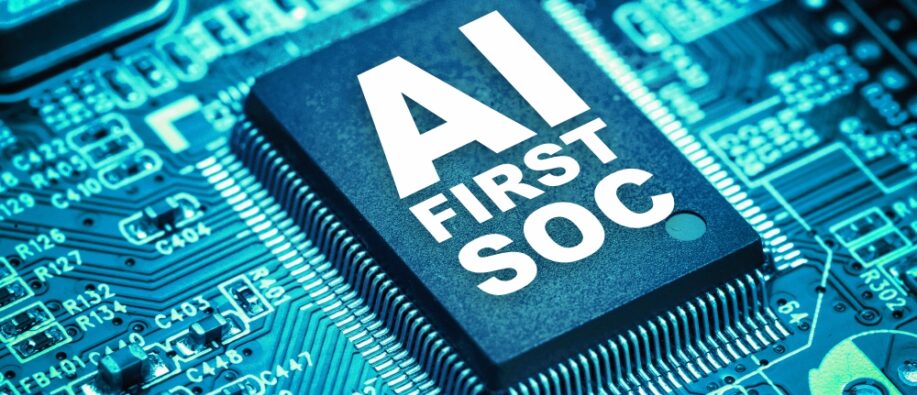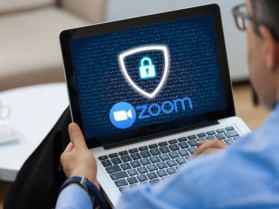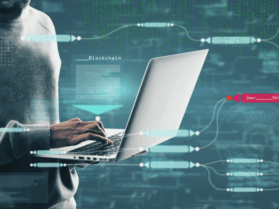Cybersecurity is changing fast, and AI is making it smarter. There are traditional security methods that are still struggling to keep up with modern cyberattacks. They depend on slow, manual work and fixed rules. This is where the AI-first SOC (security operations center) helps. It mainly uses AI and ML to find and respond to cyber threats.
The new AI model built for ultimate security is changing cybersecurity by making defense smarter, faster, and more proactive. In this blog, we will explore what an AI-first SOC is and why businesses should adopt this technology to stay ahead of cybercriminals.
What is an AI-first SOC?
An AI-first SOC uses AI and ML to automate and improve various security tasks. It identifies threats before they become serious issues. Alongside, it does not act as traditional SOCs, which depend on human intervention. By taking care of boring, repetitive tasks like sorting through alerts and analyzing threats, it helps security teams and reduces their workload.
This helps analysts to focus on bigger problems rather than working on or reacting to every small issue. It also uses cloud technology to quickly go through huge amounts of security data. This makes it easier to find possible dangers early.
Key features of an AI-first SOC:
-
- Automated Threat Detection: AI processes millions of data points in seconds. It finds out patterns that human analysts may fail to identify.
- Behavioral Analysis: Rather than searching for only known threats, AI learns typical network behavior and flags deviations.
- Predictive Capabilities: Machine learning models predict possible attack vectors based on historical and real-time data.
- Reduced Alert Fatigue: AI allows human analysts to focus on real threats by filtering out false positives.
How AI–first SOC Improves Threat Detection
Real-Time Threat Identification
Cyberattacks are increasing day by day. There are few threats, such as Ransomware that can lock up important data in minutes, and phishing scams which can trick employees in almost seconds. Traditional security centers often struggle to keep up with these fast-moving threats.
By using AI, modern security systems make it easier to protect your data and keep your organization safe. They work smarter, spot threats, and help your team stay ahead of cyber risks.
Advanced Anomaly Detection
Hackers are developing new techniques to overcome the traditional security measures. As depending on known malware patterns (signature-based detection) is not enough to solve the advance threats. AI-powered Security Operations Centers (SOCs) use behavioral analytics to find unusual activities, like a user accessing sensitive files at odd hours or a sudden increase in data transfers, even if the attack method is new.
Faster Incident Response
When a security breach happens, every second is important. AI doesn’t find threats; it also automates the response. For example, if an AI system finds a brute-force attack, it can immediately block the suspicious IP, isolate affected systems, and alert the security team. It performs all these actions without human intervention. This quick action reduces damage and recovery time.
Proactive Threat Hunting
AI-first SOCs actively search for hidden threats. It does not wait for alerts. It combines data from various sources like firewalls, endpoints, and cloud services. This proactive approach is a major advancement in cybersecurity.
Why Businesses Need an AI-First SOC
The Growing Complexity of Cyber Threats
Cyber criminals now use themselves, crafting more sophisticated attacks. Only an AI-first SOC can match this speed and complexity, providing a defense mechanism that evolves alongside threats.
Shortage of Skilled Cybersecurity Professionals
There is a global shortage of cybersecurity experts, which has left many SOCs understaffed. AI has increased human teams that handle daily tasks and allows analysts to focus on strategic security decisions.
Compliance and Risk Management
Regulations like GDPR and CCPA have few regulations. Businesses need to follow these regulations for strong security measures. Security operations centers (SOCs) driven by AI help businesses to follow such rules by providing detailed logs, automated reports, and continuous monitoring. This makes it easier for organizations to stay compliant with these regulations.
Cost Efficiency
It appears that AI is costly, but the truth is that it reduces the long-term costs. As it avoids data breaches, cuts downtime, and streamlines security operations.
Challenges and Considerations
Although AI-first SOCs have many advantages, there are some challenges too:
Data Privacy Issues: AI has access to a large amount of data, which raises privacy concerns. Organizations need to follow data protection legislation.
False Negatives: There is no such thing as a perfect system. AI may miss attacks at times and need human intervention.
Integration Complexity: To switch from conventional SOC to AI SOC is not an easy task.
The Future of AI in Cybersecurity
The AI-first SOC is only the start. As machine learning continues to improve, we can anticipate:
-
- Self-learning Systems: AI that evolves automatically without human intervention.
- Collaborative AI Networks: Threat intelligence exchange between AI systems within and across organizations.
- Quantum AI Security: Next-generation AI built to defend against quantum computing-powered attacks.
Companies that adopt this transformation today will be ahead of the game when it comes to tomorrow's cyber threats.
Final Thoughts!
AI-first SOC has changed cybersecurity drastically. By using artificial intelligence, organizations are able to identify threats in real-time and respond accurately. This keeps them ahead of ever-sophisticated attackers. There are still many challenges, but the advantages, increased security, cost reduction, and compliance preparedness make AI-powered SOCs the future of digital defense.
For more such insightful information, visit SecureITWorld!
FAQs
Q1. How is an AI-first SOC different from a traditional SOC?
Answer: A traditional SOC depends on humans to find threats and fix issues. This process is slow and tiring. An AI-first SOC uses machine learning so that most of the work is done automatically. This makes it quicker, smarter, and less stressful for security teams.
Q2. When AI-first was used in cybersecurity?
Answer: In early 2010, AI started being used in cybersecurity, but it became more common and powerful in the last few years as threats grew more complex and fast.
Q3. What is meant by AI SOC?
Answer: An AI SOC (Security Operations Center is a modern setup where AI helps detect and respond to cyber threats faster. It uses smart tools to reduce human workload and catch problems more accurately.
Recommended For You:
AI in Cybersecurity: Boon or Burden? Uncover the Impact on Security
Threat Detection and Response (TDR) in Cybersecurity: Explained






